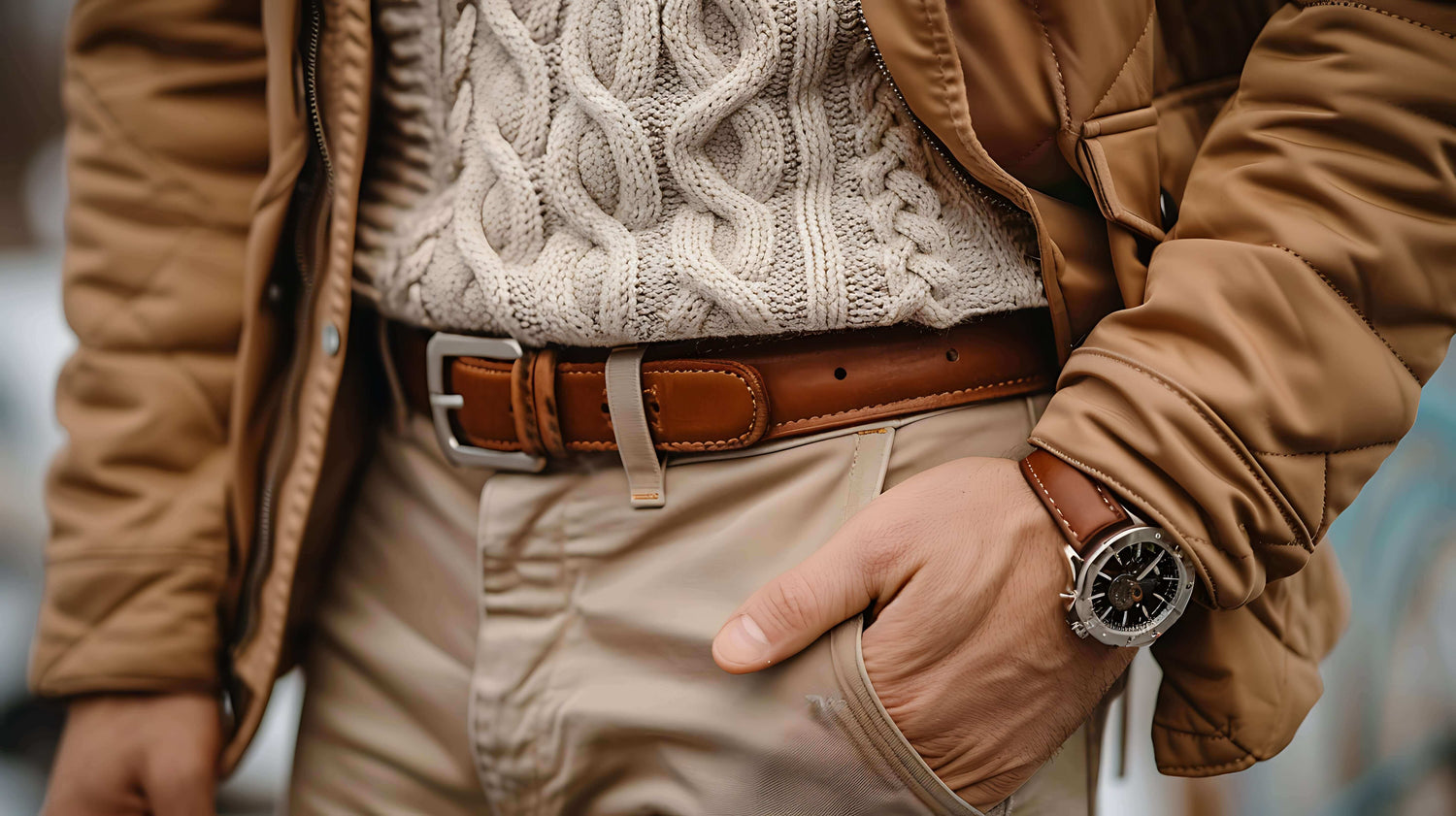Introduction
For anybody in Law enforcement, navy personnel, or maybe outside fanatics, tactical gear is more significant than just a device—it is an essential device that brings improved capability and protection. Whether dealing with equipment on the pass or relying on short-get entry in excessive-pressure situations, this gear is constructed to finalize underneath enduring conditions. However, protection is vital to ensure its longevity and long-term reliability.
As someone who's trusted tactical devices for years, I know a manual on the vital steps of preservation could make a big distinction in performance. Regular care keeps your equipment in pinnacle condition, geared up for the moments you want it most.
Why Tactical Belt Maintenance Matters
A tactical belt is designed to withstand rigorous use and wear over the years, making it a crucial system for everybody wanting dependable service. Regular maintenance isn't just about keeping it smooth; it's what preserves its integrity. A properly maintained belt will offer years of capability and protection, while neglect can cause untimely wear, compromising its sturdiness and reliability.
Different types of tactical gear—from body armor to duty belts, tactical vests, footwear, and protective eyewear—require particular maintenance. Depending on their materials and frequency of use, exposure to extreme temperatures, moisture, dust, and challenges can affect those gadgets. Taking proactive steps to maintain the functionality of those gadgets in crucial moments is essential.

Routine Cleaning
Routine cleansing is crucial for preserving the situation of your tactical equipment. After each use, wipe down all surfaces with a damp fabric if it's been uncovered to dust, sweat, or moisture. For deeper cleaning, use a mild soap to do away with constructed-up grime, avoiding harsh chemical compounds or abrasive cleaners that would harm the cloth. Always air dry the gear in a properly ventilated area to save you mildew, mold, and material degradation.
Regular Inspection
Regularly inspecting your tactical equipment is fundamental to catching wear and tear early. Pay deep attention to stitching, buckles, and attachment points for frayed edges, free threads, or cracks in hardware. Identifying these issues early helps prevent problems that could compromise capability and protection.
Lubrication of Moving Parts
Apply the right lubricant to any moving elements like zippers and snaps to ensure they function easily and continue to be easy to apply. This additionally provides a defensive layer against rust and corrosion, which may lengthen the lifespan of your tools and preserve their reliability over the years.
Proper Storage Practices
Proper storage is critical for maintaining the situation and extending the lifespan of your tactical equipment. Store it in fab, dry surroundings, away from direct daylight and severe temperatures, which can degrade materials over the years. Keeping your tools inside the proper storage area will prevent wear and tear and ensure they stay practical.
Avoiding Extreme Temperatures
Extreme temperatures could have a detrimental impact on tactical belts and different equipment. Prolonged exposure to excessive warmness may additionally cause synthetic substances to weaken or warp, while bloodless could make them brittle. Always store your equipment in a fab, dry area, far from direct sunlight and temperature fluctuations.
Storing in a Flat Position
Storing in a flat position is essential for objects that ought to maintain their form—like frame armor and tactical belts. Avoid striking these items by their buckle, as this can cause stretching through the years. If space is constrained, you may lightly roll the belt and stabilize it with a soft band or location it in a chosen gear bag to prevent unnecessary strain.
Protecting from Moisture
Moisturе can еncouragе thе growth of mould and mildеw and causе matеrial dеgradation. Kееp your еquipmеnt complеtеly dry and don't forgеt to usе silica gеl packеts to absorb еxtra moisturе. Ovеr timе and this еxtra layеr of protection will assist your instrumеnts continuе to function and bе dеpеndablе.
Deep Cleaning Tactical Gear
Deep cleaning of tactical gear is crucial and must be done periodically, especially if your gear has been subjected to harsh environmental situations. Begin by detaching and disassembling any detachable additives to ensure you can properly clean each part. This step is important for getting rid of dust and other contaminants that accumulate in hard-to-attain regions.
When choosing cleaning materials, use ones appropriate for your equipment's unique materials. Avoid harsh or abrasive chemicals that might damage fabrics, coatings, or sensitive components. After cleaning, it's important to air dry every item absolutely before reassembling and storing it to prevent the growth of mold and mildew, which can degrade the material and even pose fitness troubles.
Addressing Damage and Repairs
Replacing worn components to your tactical belt is vital for preserving its functionality. If any additives, including buckles, D-earrings, or other hardware, become broken or excessively worn, they must be replaced directly. Many producers provide replacement elements, or you could locate exceptional aftermarket options to repair your tools.
Reinforcing stitching is also a critical step to ensure reliability. If you observe loose or frayed sewing, you can repair it yourself using basic sewing skills and a robust, durable thread. For more complex upkeep, an expert tailor or tools repair provider can secure the stitching, making your tools extra durable and equipped for prolonged use.
When damage is extensive, recall looking for expert repair services. Specialists can examine the extent of the damage and perform profitable upkeep to return your belt to its finest condition.
Best Practices for Prolonging the Lifespan of Your Tactical Belt

If feasible, rotate your gear using two or more tactical belts. This reduces the amount put on any single belt, considering ordinary inspection and cleansing among uses. Having a reliable backup is always an intelligent method.
Use your belt as meant to avoid premature put-on. Tactical belts are designed for precise functions, so avoid overloading or using them for responsibilities past their intended feature. Following the hints on your belt's structural integrity will help maintain its niceness.
Regularly update your tools by staying vigilant about their situation. Even with protection, belts eventually reach the cease of their valuable existence. Be organized to replace your tools as needed to ensure you're continually ready with safe, dependable gadgets.
Conclusion
Proper protection and care are essential for maximizing your tactical belt's lifespan and overall performance. By following the suggestions mentioned in this article—everyday cleaning, careful inspection, appropriate storage, and timely maintenance—you can ensure that your belt remains a dependable part of your tools for years to come. Remember, a properly maintained belt not only helps your equipment but also enhances your protection and efficiency in the area.
FAQ
1. How often ought I smooth my tactical gear?
The cleansing frequency of your tactical tools relies upon usage. If you regularly use it in grimy or moist conditions, the goal is to smooth after each use. Otherwise, a thorough cleaning every few months needs to be enough.
2. Can I machine wash my tactical tools, and how can I prevent mold and mold?
Always look at the manufacturer's instructions before attempting to machine wash tactical tools. Many items must be hand-washed to avoid damage, specifically people with armor or particular coatings. To prevent mold and mold, make sure your tools are dry before the garage, hold them in humidity-managed surroundings, and bear in mind the use of silica gel packets to take in extra moisture.
3. What should I do if I discover damage during the inspection?
If you find damage during the inspection, deal with it immediately. For minor problems, sewing or the use of adhesive patches can help. For extra enormous harm, do not forget to replace the item or consult the producer for maintenance.
Popular Articles


